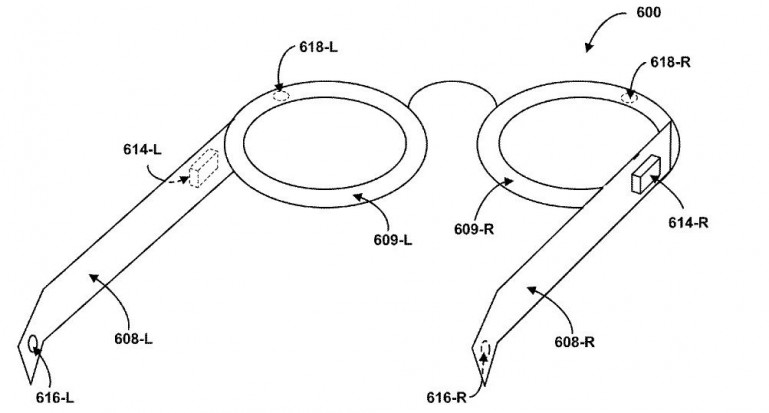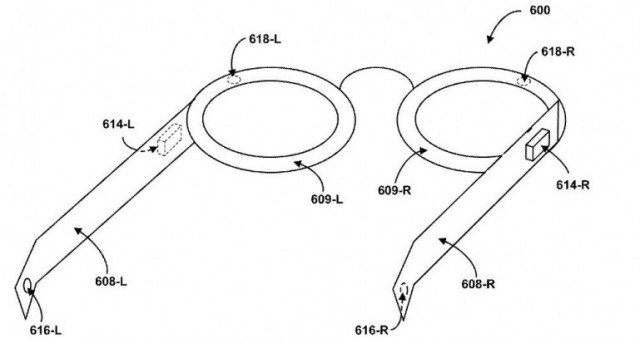Google’s Project Glass has been an interesting thing to follow. We first heard about the wearable technology back at Google I/O last year, and while the company’s initial vision was little more than a concept at the time, it has come a long way. We haven’t seen a huge influx of actual use cases outside of taking photos/video and sharing them to Google+ just yet, but perhaps all of that will change once Google holds its private developers’ event (though, considering those attending will be under strict NDA we might not hear about anything that will be discussed at the workshop).
Since then, many different patents have been uncovered to give us an idea of what kind of features Google might look to add between now and whenever these things are ready for retail. One such patent was a laser-projected keyboard that might allow someone to type or dial a phone number by manipulating a virtual keyboard on their hand. It sounds crazy, but projected keyboard technology already exists and it’s not outside the realm of possibility.
Another very interesting patent has been uncovered as of late in regards to Google Glass — “headphoneless” headphones. This patent, filed in October 2011, describes a system where a built-in vibration transducer will be used to create an indirect bone conduction speaker. In English, this means that a vibration motor within the frames of the glasses resting on a bone just in front of your ear could be used to send audio signals straight to your inner-ear.
This sort of tech would solve the issue of audio for the purposes of, say, a phone call or listening to turn-by-turn walking directions without having to wear actual earphones or make use of a privacy-killing external speaker. The easy way out would be to use frame-mounted ear buds, but it sounds like Google really wants this tech to be the 9th wonder of the world. Whether or not something like this ends up making it into Google Glass is still up for debate, but the existence of such a patent lets us know that Google’s at least thinking about it, and that’s all that we need to get excited.
We’re expecting Google to give us an update on the project at Google I/O in May — which we’ll be on hand for, of course — and we’re still trying to see if we can deliver any updates to you guys from the developer workshop taking place next month. Either way, Google’s looking to drop quite the bombshell in 2013 and you can bet we’ll be smack-dab in the center of the blast radius to absorb all the exciting bits we can.
[USPTO via Patent Bolt]












Looks cool and almost makes you want to wait for this version to come out….
But then they’ll come out with an even better version after that. And another after that. Sure, first it’ll start out with your standard rims. Then it will go to 3″, 4″, 5″ and maybe even 6″ rims. Before you know it, there will be blinged out 22″ rims and subwoofer transducers and, like, 6Gs.
Dont forget about the 27 core processor with a 1000mah battery.
My guess is, the sound will most likely be transmitted via bone conduction (probably the mastoid bone) through both temples or temple tips. Gonna be interesting to see how that pans out.
“a built-in vibration transducer will be used to create an indirect bone conduction speaker”, yeah… good guess? lol, he said that.
This technology has been around for years. I remember lollipops that did this exact thing with an FM radio signal. At first the sensation is a bit strange, buy when you get used to it the quality is perfect.
Edison also used this same idea to hear his phonograph as he was near deaf when he invented it.
How about wireless ear implants that are powered by body.
Is this similar to what jawbones are based on?
Indeed. Except instead of the ear bones, the jawbone picks up vibrations from the… oh, dammit, what is it called…